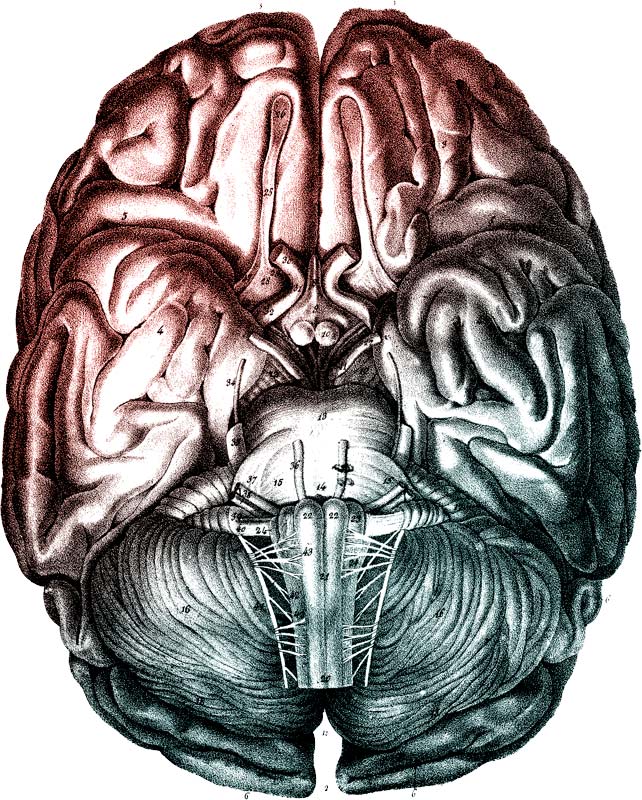Take, for example, the case of PHINEAS P. GAGE, that American railroad foreman who had a horrific run-in with an iron rod. In 1848, as Gage and his crew were blowing up boulders to clear a new route in rural Vermont, the blasting powder ignited prematurely, sending a 42-inch-long tamping rod through the roof of his open mouth and out the top of his head. After a long and miraculous convalescence, Gage would return to the job market and society in general but with a significantly altered personality. His even-keeled, shrewd and smart former self was now fitful, irreverent and profane. Many who knew him both before and after the accident said Gage was no longer the same man. Had he indeed become a different person?

Photograph of cased-daguerreotype studio portrait of brain-injury survivor Phineas P. Gage (1823–1860) shown holding the tamping iron that injured him.
Consider, too, the ship of Theseus, that oceangoing vessel aboard which the Greek hero rescued the children of Athens after slaying the minotaur. As myth would have it, to keep the storied ship honorably afloat for several centuries, craftsmen, over time, had replaced every decayed plank and rusty part. Naturally, this comprehensive overhaul sparked philosophical debate: Was it still the same ship?
Philosophers have long pondered such questions. At first read, they may seem like fanciful thought exercises and points of debate with no bearing on real-world decision- making. That, however, could change, says John Protzko, a researcher at UC Santa Barbara.
Drawing inspiration from Gage’s permanent mood swing and Theseus’s renewed ship, Protzko and his team in the Department of Psychology & Brain Sciences zeroed in on a question: When people say someone’s identity has changed, do the original person’s everyday obligations — the payment of a fine, for example — stay or go with them?
While today these are questions for science fiction, the answers may prepare us for future moral and legal debates, including the medical — or even digital — preservation of a dead person’s consciousness, according to Protzko. His 2023 study asked the question, “Do obligations follow the mind or body?”
“The views of the professionals we interviewed are particularly important because some elements of science are moving toward head transplants or even more sci-fi scenarios like uploading a person’s mind to the cloud,” Protzko says. “If those things ever happen, lawyers and other professionals may be called on to weigh in on what happens to obligations.”
The sci-fi factor
To be fair, science fiction does have a semi-impressive track record of predicting the future. Mobile phones, ATMs and robot vacuum cleaners, for example, made their literary debuts about 75 years ago, and famed author H.G. Wells was dreaming up chemical weaponry and organ transplants in the late 1800s. But also keep in mind that sci-fi often gets it wrong. Ridley Scott’s “Blade Runner,” for instance, depicted a post-apocalyptic Los Angeles set in the year 2019 with flying cop cars and synthetic superhumans attacking ships on fire off the shoulder of Orion, among other literary inventions that have yet to occur. As experimental psychologists, Protzko’s team members were more intrigued by the study’s anticipated mental gymnastics than by predicting the future. “To be honest, I’m not the biggest fan of sci-fi,” he says. “But I do enjoy reading experimental philosophy that brings up questions of identity and obligation. We kept going down that road and said, ‘Let’s see what happens.’”
As a starting point, Protzko and his colleagues turned to the existing literature of influential thinkers, including 17th-century philosopher and physician John Locke, who concluded that identity and obligations belong to a person’s mind.
From there, they introduced hypothetical scenarios in which people with obligations — such as debts — had a brain transplant with someone else. These scenarios were presented to laypeople and also to lawyers, accountants and bankers to evaluate the response of professionals whose jobs require tracking transfers of obligation within legal frameworks.
Based on other studies in the paper, the professionals’ higher education levels and reduced beliefs that people have essences, “they should have said the obligations are more likely to follow the brain into a new body,” Protzko says. “Instead, they were even more likely to say that an obligation stays with the body that incurred it, even with someone else’s brain inside. This is not what many philosophers would think.”

Introducing Adambrain-Johnbody
Philosophers generally subscribe to the view that since the brain is the decision-making organ, responsibility goes with it. But that’s not always the case, according to Colin Allen, a distinguished professor of philosophy at UC Santa Barbara.
Let’s say John owes $2,000 in back taxes. He gets into a car crash with Adam. At the hospital, both men are near death, but the doctor thinks she can save them both with an experimental brain swap. The operation is a success, and both men experience a full recovery. John’s body now has Adam’s brain in it, and Adam’s body has John’s brain in it. Who pays that $2,000 debt, and why?
By default, Allen is an obligation-follows-brain kind of guy. But he can also noodle it the other way.
“Suppose that the bank will only release money from John’s account with appropriate biometric information, such as face recognition or a fingerprint,” Allen explains, “and the state has not yet decided whose name should go on which ID that has the photo of Adam’s face. At the same time, only Adam’s brain inside John’s body can satisfy John’s biometrics. In that case I would say that ‘Adambrain-Johnbody’ should pay with the money that was John’s.”
Naturally, the scenario requires the suspension of belief, Allen adds. “We already know enough about the science of this to say that in the near future — multiple decades from now — this can’t happen. Surgeons can’t even reattach all the necessary nerve connections in a severed spinal cord within the same body, let alone a whole brain to the spinal cord and peripheral nerves in a different body, and so the idea of a positive outcome is a scientific fantasy. But that’s not to say it could never happen.”
And if it does, studies like the one published by Protzko and his team may come in handy.
“Different people have different intuitions,” Protzko says. “At the end of the day, if we ever get to the point where some transplant like this happens, it’s going to be mostly the lawyers who come up with decisions about obligations. It’s important to go through these scenarios to get a sense of how they think. Lawyers have certain views and intentions, and some become politicians who make the laws.”


